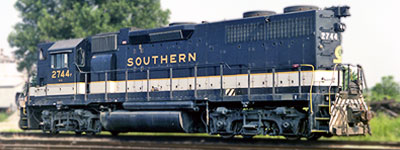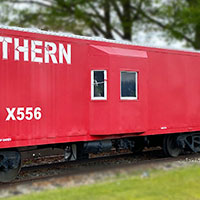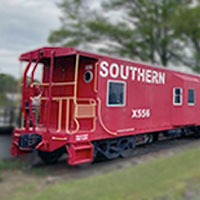




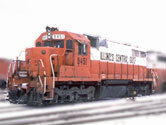


 Premier Fallen Flag
Premier Fallen FlagSouthern Railway
"The Southern Serves the South"
Crisscrossing the southeastern United States like a sprawling X, over its long history the Southern managed to weave 150 individual predecessor line into a single, coherent transportation system. From the nation's capital to New Orleans, from Jacksonville to St. Louis, the Southern system truly "Served the South" with service to every state in the region. The first national railroad system to convert completely to diesel-electric motive power, the Southern paved the way for many other innovations that the entire industry now takes for granted. "Look Ahead. Look South."
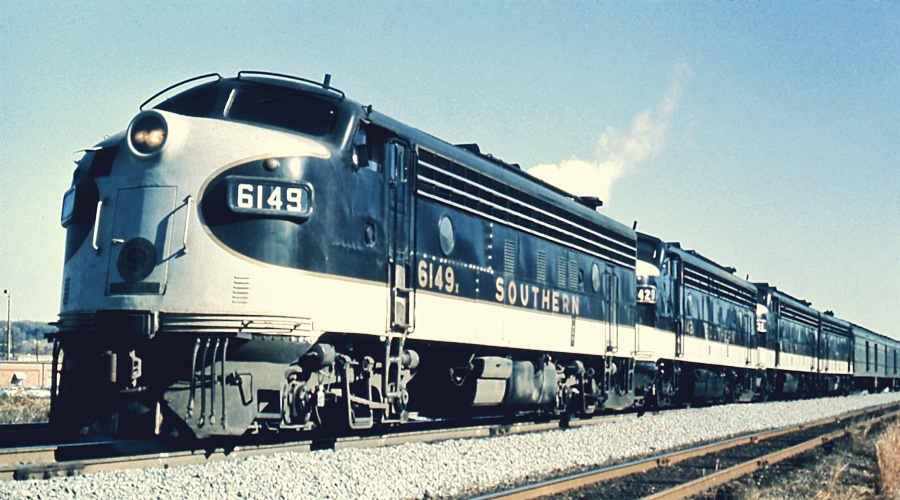

 ore than 25 years after it passed out of existence as an independent company, the story of Southern Railway remains relevant as a case study in how to operate a railroad efficiently and productively. Southern generated dividends for its shareholders and provided jobs for its employees, but its most lasting impact was it contribution to the economic wellbeing of the region it served. Today's railroaders, whether they realize it or not, all share in the legacy of this remarkable railroad.
ore than 25 years after it passed out of existence as an independent company, the story of Southern Railway remains relevant as a case study in how to operate a railroad efficiently and productively. Southern generated dividends for its shareholders and provided jobs for its employees, but its most lasting impact was it contribution to the economic wellbeing of the region it served. Today's railroaders, whether they realize it or not, all share in the legacy of this remarkable railroad.
Tom Murray - Southern Railway - 2007
 he Southern Railway was a class 1 railroad system based in the southeastern United States between 1894 and 1982, when it merged with the Norfolk & Western to form the current Norfolk Southern corporation. The Southern was the product of nearly 150 predecessor lines that were combined, reorganized, and recombined beginning as early as the 1830s, formally becoming the Southern Railway in 1894.
he Southern Railway was a class 1 railroad system based in the southeastern United States between 1894 and 1982, when it merged with the Norfolk & Western to form the current Norfolk Southern corporation. The Southern was the product of nearly 150 predecessor lines that were combined, reorganized, and recombined beginning as early as the 1830s, formally becoming the Southern Railway in 1894.
At the start of the 1970s, the Southern operated more than 6,000 miles of mainline railroad and reported over 26 million net ton-miles of revenue freight and 110 million passenger-miles. These numbers did not include its Class I subsidiaries Alabama Great Southern (528 miles); Central of Georgia (1729 miles); Savannah & Atlanta (167 miles); Cincinnati, New Orleans and Texas Pacific Railway (415 miles); Georgia Southern & Florida (454 miles); all in addition to twelve Class II subsidiaries.
Southern Railway came into existence in 1894 through the combination of the Memphis & Charleston Railroad, the Richmond & Danville system, and the East Tennessee, Virginia & Georgia Railroad. The company owned two-thirds of the 4,400 miles of line it operated, and the rest was held through leases, operating agreements, and stock ownership. Southern also controlled the Alabama Great Southern and the Georgia Southern & Florida, which it operated separately, and it also held an interest in the Central of Georgia. Additionally, the Southern also agreed to lease the North Carolina Railroad Company, providing a critical connection from Virginia to the rest of the southeast via the Carolina regions. By the time the route from Meridian, Mississippi, to New Orleans, Louisiana, was acquired in 1916, the railroad had assembled the 8,000-mile, 13-state system that lasted for almost half a century.
The railroad joined forces with the Norfolk & Western Railway in 1980 to form the Norfolk Southern Corporation. This combination was created in response to the formation of the CSX Corporation, later transformed into CSX Transportation in 1986. Southern and N&W continued as operating companies of Norfolk Southern until 1982, when Norfolk Southern merged nearly all of N&W's operations into Southern to form the Norfolk Southern Railway. The combined railroad has used that name since.


postcard / Toccoa, Ga / Apr 1950 / collection

1964 system map / collection


Huntsville, Al / Jun 1972 / JCH

1972 Official Guide ad / collection

Hattiesburg, Ms / Nov 1985 / JCH
Southern Firsts
- predecessor South Carolina Canal & Rail Road first to carry passengers, troops, and mail
- first major railroad in the United States to be fully converted from steam to diesel-powered locomotives
- leader in the use of helper diesel-electric locomotives on heavy grades, including radio-controlled units
- widely credited with inventing unit trains for coal and other heavy commodities
- early to understand the power of marketing in freight service using the promotional phrase "Southern Gives a Green Light to Innovation"
- first mainline railroad to institute a steam excursion program
- early adopter of computer systems for communications, managing trains, and organizing yards and car movements

from Handbook of American Railroads
- 1951 / collection
collection

Sheffield, Al / Jan 1967 / JCH




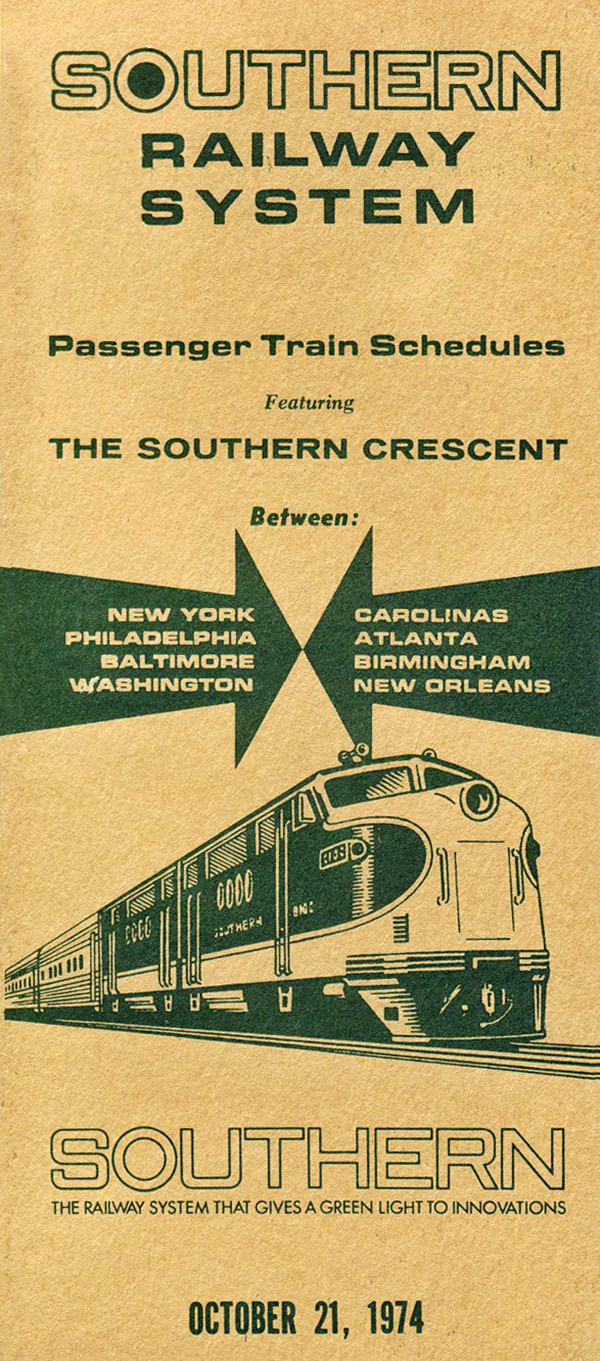


Oakdale, TN / Nov 1968 / JCH

Huntsville, Al / Nov 1971 / JCH

from The Birmingham News
newspaper - Nov 1961 / collection
Links / Sources
- Norfolk Southern website
- Southern Railway Historical Association
- Wikipedia article for Southern Railway
- Diesel Shop roster for Southern Railway
- Railroad Picture Archives Southern roster
- Paul Withers, Southern: A Motive Power Pictorial (Withers, 1987)
- Robert G. Lewis, Handbook of American Railroads (Simmons-Boardman, 1951)
